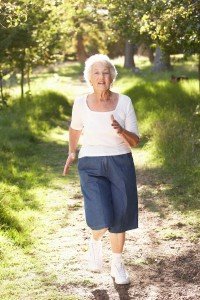Recent Research on Happiness and Health
Compiled by Kevin W Chen, Ph.D.
Happiness intervention decreases pain and depression, boosts happiness among primary care patients. Prim Health Care & Research Dev. 2014 Jan 22:1-13. By Lambert D’raven LT, Moliver N, Thompson D. from Red Deer Primary Care Network, Alberta, Canada.
Aim: The aim of the study was to determine whether positive psychological interventions (PPIs) in a primary health care setting would improve physical and mental health over time. Background: Most treatments for depression focus on reducing symptoms rather than on creating positive states of mental health. Empirical studies to verify the efficacy of PPIs in primary health care are needed. Method: In a six-week pilot program, we invited patients in a primary health care setting with symptoms of depression to participate in groups designed to increase levels of happiness. The program involved interventions such as engaging in good deeds, writing gratitude letters, and introducing empirical research. Patients completed the SF12v2® at the beginning and end of the program and at three- and six-month follow-up. Measures included physical functioning, bodily pain, mental health, social functioning, and vitality. Patients also participated in focus groups to discuss their experiences. Findings: Of the 124 patients who enrolled in this pilot study, 75 completed the six-week program, and 35 participated in two follow-up assessments. Among the participants who remained for all follow-up assessments, scores improved from baseline to 6-month follow-up for health, vitality, mental health, and the effects of mental and physical health on daily activities. This subset of patients reported greater energy and more daily accomplishments, along with reductions in functional limitations. Improvements in mental and physical health and functioning were shown over a six-month period. The study provides a basis for the further investigation of PPIs in creating improvements for patients with depression in primary health care.
The Effect of Humor on Short-term Memory in Older Adults: A New Component for Whole-Person Wellness. Adv Mind Body Med. 2014 Spring;28(2):16-24. By Bains GS, Berk LS, Daher N, et al.
 Context: For older adults, the damaging effects of aging and stress can impair the ability to learn and sustain memory. Humor, with its associated mirthful laughter, can reduce stress and cortisol, a stress hormone. Chronic release of cortisol can damage hippocampus neurons, leading to impairment of learning and memory. Objectives: The primary goal of this study was to determine whether watching a humorous video had an effect on short-term memory in an older population. Design: The research team designed a randomized, controlled trial. The study took place at Loma Linda University in Loma Linda, California. The research team recruited 20 normal, healthy, older adults, 11 males and 9 females. Intervention: The humor group (n = 10, mean = 69.3 ± 3.7 y) self-selected 1 of 2 humorous videos-a Red Skelton comedy or a montage of America’s Funniest Home Videos-and watched it for 20 min. A control group (n = 10, mean = 68.7 ± 5.5 y) sat calmly for 20 min and were not allowed to read, sleep, or talk on a cell phone. Outcome Measures: The Rey Auditory Verbal Learning Test was used to assess short-term memory-learning ability, delayed recall, and visual recognition. Salivary cortisol levels were measured at predetermined times. Results: Learning ability improved by 38.5% and 24.0% in the humor and control groups, respectively (P = .014). Delayed recall improved by 43.6% and 20.3% in the humor and control groups, respectively (P =.029). Within the humor group, delayed recall (43.6%) was significant compared with learning ability (38.5%) (P = .002). At 3 predetermined time points, significant decreases in salivary cortisol were observed in the humor group (P = .047, P = .046, and P = .062, respectively). Conclusion: The study’s findings suggest that humor can have clinical benefits and rehabilitative implications and can be implemented in programs that support whole person wellness for older adults. Learning ability and delayed recall are important to these individuals for a better quality of life-considering mind, body, spirit, social, and economic aspects. Older adults may have age-associated memory deficiencies. However, medical practitioners now can offer positive, enjoyable, and beneficial humor therapies to improve these deficiencies.
Context: For older adults, the damaging effects of aging and stress can impair the ability to learn and sustain memory. Humor, with its associated mirthful laughter, can reduce stress and cortisol, a stress hormone. Chronic release of cortisol can damage hippocampus neurons, leading to impairment of learning and memory. Objectives: The primary goal of this study was to determine whether watching a humorous video had an effect on short-term memory in an older population. Design: The research team designed a randomized, controlled trial. The study took place at Loma Linda University in Loma Linda, California. The research team recruited 20 normal, healthy, older adults, 11 males and 9 females. Intervention: The humor group (n = 10, mean = 69.3 ± 3.7 y) self-selected 1 of 2 humorous videos-a Red Skelton comedy or a montage of America’s Funniest Home Videos-and watched it for 20 min. A control group (n = 10, mean = 68.7 ± 5.5 y) sat calmly for 20 min and were not allowed to read, sleep, or talk on a cell phone. Outcome Measures: The Rey Auditory Verbal Learning Test was used to assess short-term memory-learning ability, delayed recall, and visual recognition. Salivary cortisol levels were measured at predetermined times. Results: Learning ability improved by 38.5% and 24.0% in the humor and control groups, respectively (P = .014). Delayed recall improved by 43.6% and 20.3% in the humor and control groups, respectively (P =.029). Within the humor group, delayed recall (43.6%) was significant compared with learning ability (38.5%) (P = .002). At 3 predetermined time points, significant decreases in salivary cortisol were observed in the humor group (P = .047, P = .046, and P = .062, respectively). Conclusion: The study’s findings suggest that humor can have clinical benefits and rehabilitative implications and can be implemented in programs that support whole person wellness for older adults. Learning ability and delayed recall are important to these individuals for a better quality of life-considering mind, body, spirit, social, and economic aspects. Older adults may have age-associated memory deficiencies. However, medical practitioners now can offer positive, enjoyable, and beneficial humor therapies to improve these deficiencies.
Positive psychology interventions in people aged 50-79 years: long-term effects of placebo-controlled online interventions on well-being and depression. Aging & Ment Health. 2014 Apr 8. By Proyer RT, Gander F, Wellenzohn S, Ruch W.
 Objectives: Various positive psychology interventions have been experimentally tested, but only few studies addressed the effects of such activities in participants aged 50 and above. Method: We tested the impact of four self-administered positive psychology interventions in an online setting (i.e., gratitude visit, three good things, three funny things, and using signature strengths in a new way) on happiness and depressive symptoms in comparison with a placebo control exercise (i.e., early memories). A total of 163 females aged 50-79 tried the assigned interventions or the placebo control exercise for one week and completed measures on happiness and depressive symptoms at five times (pre- and post-test, 1, 3, and 6 months). Results: Three out of the four interventions (i.e., gratitude visit, three good things, and using signature strengths in a new way) increased happiness, whereas two interventions (three funny things and using signature strengths in a new way) led to a reduction of depressive symptoms on at one post-measure. Conclusion: Positive psychology interventions yield similar results for people aged 50 and above as for younger people. The dissemination of such interventions via the Internet offers a valuable opportunity for older age groups as well.
Objectives: Various positive psychology interventions have been experimentally tested, but only few studies addressed the effects of such activities in participants aged 50 and above. Method: We tested the impact of four self-administered positive psychology interventions in an online setting (i.e., gratitude visit, three good things, three funny things, and using signature strengths in a new way) on happiness and depressive symptoms in comparison with a placebo control exercise (i.e., early memories). A total of 163 females aged 50-79 tried the assigned interventions or the placebo control exercise for one week and completed measures on happiness and depressive symptoms at five times (pre- and post-test, 1, 3, and 6 months). Results: Three out of the four interventions (i.e., gratitude visit, three good things, and using signature strengths in a new way) increased happiness, whereas two interventions (three funny things and using signature strengths in a new way) led to a reduction of depressive symptoms on at one post-measure. Conclusion: Positive psychology interventions yield similar results for people aged 50 and above as for younger people. The dissemination of such interventions via the Internet offers a valuable opportunity for older age groups as well.
Reduction of Bodily Pain in Response to an Online Positive Activities Intervention. J Pain. 2014 Feb 22. pii: S1526-5900 by Hausmann LR, Parks A, Youk AO, Kwoh CK.
 Inducing temporary positive states reduces pain and increases pain tolerance in laboratory studies. We tested whether completing positive activities in one’s daily life produces long-term reductions in self-reported bodily pain in a randomized, controlled trial of an online positive activities intervention. Participants recruited via the web were randomly assigned to complete 0, 2, 4, or 6 positive activities administered online over a 6-week period. Follow-up assessments were collected at the end of 6 weeks and at 1, 3, and 6-months post-intervention. We used linear mixed effects models to examine whether the intervention reduced pain over time among those who had a score < 67 on the bodily pain subscale of the Short Form-36 at baseline (N=417; pain scores range from 0 to 100; higher scores indicate less pain). Mean pain scores improved from baseline to 6 months in the 2-activity (55.7 to 67.4), 4-activity (54.2 to 71.0), and 6-activity (50.9 to 67.9) groups. Improvements were significantly greater (p<.05) in the 4-activity and 6-activity groups than in the 0-activity control group (54.1 vs. 62.2) in unadjusted and adjusted models. This study suggests that positive activities administered online can reduce bodily pain in an adults with at least mild-to-moderate baseline pain. Perspective: This study demonstrates that teaching people simple positive activities can decrease reported levels of bodily pain. Moreover, this study demonstrates that these activities can be administered over the internet, a potential avenue for broadly disseminating health interventions for relatively low-cost and with high sustainability.
Inducing temporary positive states reduces pain and increases pain tolerance in laboratory studies. We tested whether completing positive activities in one’s daily life produces long-term reductions in self-reported bodily pain in a randomized, controlled trial of an online positive activities intervention. Participants recruited via the web were randomly assigned to complete 0, 2, 4, or 6 positive activities administered online over a 6-week period. Follow-up assessments were collected at the end of 6 weeks and at 1, 3, and 6-months post-intervention. We used linear mixed effects models to examine whether the intervention reduced pain over time among those who had a score < 67 on the bodily pain subscale of the Short Form-36 at baseline (N=417; pain scores range from 0 to 100; higher scores indicate less pain). Mean pain scores improved from baseline to 6 months in the 2-activity (55.7 to 67.4), 4-activity (54.2 to 71.0), and 6-activity (50.9 to 67.9) groups. Improvements were significantly greater (p<.05) in the 4-activity and 6-activity groups than in the 0-activity control group (54.1 vs. 62.2) in unadjusted and adjusted models. This study suggests that positive activities administered online can reduce bodily pain in an adults with at least mild-to-moderate baseline pain. Perspective: This study demonstrates that teaching people simple positive activities can decrease reported levels of bodily pain. Moreover, this study demonstrates that these activities can be administered over the internet, a potential avenue for broadly disseminating health interventions for relatively low-cost and with high sustainability.
http://www.sciencedirect.com/science/article/pii/S1526590014005690
Direct and indirect relationships between physical activity and happiness levels among older adults: a cross-sectional study. Aging & Mental Health. 2014  Mar 31. By de Souto Barreto P. from Aix-Marseille Université/EFS/CNRS , Marseille , France
Mar 31. By de Souto Barreto P. from Aix-Marseille Université/EFS/CNRS , Marseille , France
Objectives: The purposes of this study were to examine if physical activity (PA) is associated to happiness and to investigate if social functioning and health status mediate this association. Method: Participants of this cross-sectional study were 323 men and women, age 60 or over, who were covered by the medical insurance of the French National Education System, France. They received by mail a self-report questionnaire that asked for information about general health, PA, and happiness. Results: In multinomial logistic regressions, the total volume of PA was associated to higher levels of happiness, but this association disappeared in the presence of social functioning. A structural equation modelling (SEM) showed an indirect association between PA and happiness, which was mediated by participants’ health status and social functioning; in this SEM model, social functioning was the only variable directly associated to happiness. Conclusion: Complex associations among PA, health status, and social functioning appear to determine happiness levels in older adults.
Evaluation of a seven-week web-based happiness training to improve psychological well-being, reduce stress, and enhance mindfulness and flourishing: a randomized controlled occupational health study. Evid Based Complement Alternat Med. 2013;2013:676953 by Feicht T, Wittmann M, Jose G, et al. from Coburg University of Applied Sciences, Coburg, Germany. 
Background: As distress in society increases, including work environments, individual capacities to compete with stress have to be strengthened. Objective: We examined the impact of a web-based happiness training on psychological and physiological parameters, by self-report and objective means, in an occupational health setting. Methods: Randomized controlled trial with 147 employees. Participants were divided into intervention (happiness training) and control groups (waiting list). The intervention consisted of a seven-week online training. Questionnaires were administered before, after, and four weeks after training. The following scales were included: VAS (happiness and satisfaction), WHO-5 Well-being Index, Stress Warning Signals, Freiburg Mindfulness Inventory, Recovery Experience Questionnaire, and Flourishing Scale. Subgroup samples for saliva cortisol and alpha-amylase determinations were taken, indicating stress, and Attention Network Testing for effects on attention regulation. Results: Happiness (P = 0.000; d = 0.93), satisfaction (P = 0.000; d = 1.17), and quality of life (P = 0.000; d = 1.06) improved; perceived stress was reduced (P = 0.003; d = 0.64); mindfulness (P = 0.006; d = 0.62), flourishing (P = 0.002; d = 0.63), and recovery experience (P = 0.030; d = 0.42) also increased significantly. No significant differences in the Attention Network Tests and saliva results occurred (intergroup), except for one saliva value. Conclusions: The web-based training can be a useful tool for stabilizing health/psychological well-being and work/life balance.
http://www.hindawi.com/journals/ecam/2013/676953/
Heaviness, health and happiness: a cross-sectional study of 163,066 UK Biobank participants. J Epidemiol Community Health. 2014 Apr;68(4):340-8. By Ul-Haq Z, Mackay DF, Martin D, et al. from University of Glasgow, , Glasgow, UK.
BACKGROUND: Obesity is known to increase the risk of many diseases and reduce overall quality of life. This study examines the relationship with self-reported health (SRH) and happiness. METHODS: We conducted a cross-sectional study of the 163 066 UK Biobank participants who completed the happiness rating. The association between adiposity and SRH and happiness was examined using logistic regression. SRH was defined as good (excellent, good), or poor (fair, poor). Self-reported happiness was defined as happy (extremely, very, moderately) or unhappy (moderately, very, extremely). RESULTS: Poor health was reported by 44 457 (27.3%) participants. The adjusted ORs for poor health were 3.86, 2.92, 2.60 and 6.41 for the highest, compared with lowest, deciles of Body Mass Index, waist circumference, waist to hip ratio and body fat percent, respectively. The associations were stronger in men (p<0.001). Overall, 7511 (4.6%) participants felt unhappy, and only class III obese participants were more likely to feel unhappy (adjusted OR 1.33, 95% CI 1.15 to 1.53, p<0.001) but the associations differed by sex (p<0.001). Among women, there was a significant association between unhappiness and all levels of obesity. By contrast, only class III obese men had significantly increased risk and overweight and class I obese men were less likely to be unhappy. CONCLUSIONS: Obesity impacts adversely on happiness as well as health, but the association with unhappiness disappeared after adjustment for self-reported health, indicating this may be mediated by health. Compared with obese men, obese women are less likely to report poor health, but more likely to feel unhappy.
http://jech.bmj.com/content/68/4/340.long
Religiosity, health and happiness: Significant relations in adolescents from Qatar. Int J Soc Psychiatry. 2013 Dec 16. By Abdel-Khalek AM. From University of Alexandria, Egypt.
BACKGROUND: Several studies have revealed positive associations between religiosity, health and happiness. However, the vast majority of these studies were carried out on native English-speaking participants. AIMS: The objective of this study was to estimate the relations between religiosity, health and happiness among a sample (N = 372) of Qatari adolescents (Mage = 15.2). METHOD: The students responded to five self-rating scales to assess religiosity, mental health, physical health, happiness and satisfaction with life. RESULTS: Boys obtained a higher mean score on mental health than did their female counterparts. All the correlations between the rating scales were significant and positive. Principal component analysis disclosed one component and labeled ‘Religiosity, health and happiness’ in both sexes. The multiple stepwise regression indicated that the predictors of religiosity were the self-ratings of satisfaction with life and happiness in boys, whereas the predictors among girls were satisfaction with life and physical health. CONCLUSIONS: On the basis of the responses of the present sample, it was concluded that those who consider themselves as religious were more happy, satisfied with their life and healthy.
http://isp.sagepub.com/content/early/2013/12/10/0020764013511792.long
Happiness and health behaviour in Iranian adolescent girls. J Adolesc. 2013 Dec;36(6):1187-92. By Fararouei M, Brown IJ, Akbartabar Toori M, et al. from Yasuj University of Medical Sciences, Iran.
 This study was conducted to examine the association of happiness in adolescent females with leisure time and health related behaviours namely diet, physical activity and first or second hand smoking. Using a self-administered questionnaire, data were collected from 8159 female high school students ages 11-19 years. Multivariate linear regression analysis revealed statistically significant associations between happiness and weight, regular exercise, exposure to second-hand tobacco smoke, daily fruit or vegetable consumption and the way participants spent their leisure time. Happiness was associated with lower BMI, regular physical activity, absence of exposure to second-hand smoke, higher consumption of fruits and vegetables, and spending leisure time with family (all P < 0.005). These exploratory findings suggest that encouraging children and adolescents to adopt healthy behaviours, providing family time and a smoke-free environment may make them not only healthier but also happier.
This study was conducted to examine the association of happiness in adolescent females with leisure time and health related behaviours namely diet, physical activity and first or second hand smoking. Using a self-administered questionnaire, data were collected from 8159 female high school students ages 11-19 years. Multivariate linear regression analysis revealed statistically significant associations between happiness and weight, regular exercise, exposure to second-hand tobacco smoke, daily fruit or vegetable consumption and the way participants spent their leisure time. Happiness was associated with lower BMI, regular physical activity, absence of exposure to second-hand smoke, higher consumption of fruits and vegetables, and spending leisure time with family (all P < 0.005). These exploratory findings suggest that encouraging children and adolescents to adopt healthy behaviours, providing family time and a smoke-free environment may make them not only healthier but also happier.
http://www.sciencedirect.com/science/article/pii/S0140197113001383
Childhood happiness and violence: a retrospective study of their impacts on adult well-being. BMJ Open. 2013 Sep 20;3(9):e003427. By Bellis MA, Hughes K, Jones A, et al. from Liverpool John Moores University, Liverpool, UK.
OBJECTIVES: To examine the hypothesis that adult well-being is related to childhood experiences independent of current adult sociodemographic conditions. DESIGN: A cross-sectional, stratified, randomised sample survey using self-assessed measures of current well-being and retrospective measures of childhood experiences. SETTING: Households in North West England (September 2012-March 2013). PARTICIPANTS: The individual with the next birthday in randomly selected households (n=11 500; compliance 89.6% of eligible households). Analysis was limited to those aged ≥18 years and answering all pertinent questions (n=11 157). OUTCOMES: The primary outcome was a validated multicomponent measure of mental well-being (MWB). Additional outcomes included self-assessed life satisfaction (LS), life worth and trust in others. RESULTS: Adult MWB, LS, life worth and trust were all significantly related to childhood violence and happiness. Relationships remained after controlling for sociodemographics. Thus, compared with those with happy, non-violent childhoods, respondents with unhappy, violent childhoods had adjusted ORs (95% CI, significance) of 3.10 (2.59 to 3.71, p<0.001) for low MWB, 3.62 (2.99 to 4.38, p<0.001) for low LS, 4.13 (3.40 to 5.01, p<0.001) for low life worth and 2.62 (2.20 to 3.11, p<0.001) for low trust. The impact of unhappy but non-violent childhoods were smaller but significant (p<0.001). The modeled impact of childhood factors predicted, for instance, that among unemployed white men aged 25-39 years from the most deprived communities, 27% of those with happy non-violent childhoods would have low MWB rising to 53% of those with unhappy violent childhoods. CONCLUSIONS: Adult well-being is strongly linked to childhood experiences. The addition of well-being measures to outcomes already associated with adverse childhoods (eg, adolescent antisocial behaviour and risks of adult disease) strengthens the case for investment in interventions to improve childhood experiences. Public health systems are well placed to ensure that policy to improve adult well-being exploits the potential for this to be realised through appropriate interventions.
http://bmjopen.bmj.com/content/3/9/e003427.long
Promoting happiness: the malleability of individual and societal subjective wellbeing. Int J Psychol. 2013;48(3):159-76. By Tay L, Kuykendall L. from Singapore Management University, Singapore. stay@purdue.edu
Is it possible to enhance the subjective wellbeing of individuals and societies? If so, what are the mental health interventions and economic mechanisms by which subjective wellbeing could be enhanced? We address these questions in our review of the literature on subjective wellbeing. Research now shows that although subjective wellbeing is heritable and stable, it can change substantially over time. Long-term changes can be affected by positive or negative life events; subjective wellbeing interventions have also proved to be effective for boosting wellbeing for as long as six months. At the societal level, economic factors matter for the subjective wellbeing of citizens. Economic wealth is shown to be a predictor of societal wellbeing across countries and over time. Also, high unemployment severely lowers the wellbeing of individuals and has spillover effects on other societal members, such as the employed. Given the weight of evidence, we are optimistic that subjective wellbeing can be enhanced. For practitioners, policy makers, and economists interested in the wellbeing of individuals, we propose that these findings have implications for mental health practice and economic policies. Future research and methodological issues are discussed.
Hardiness as a mediator between perceived stress and happiness in nurses. J Psychiatr Ment Health Nurs. 2014 Mar 25. By Abdollahi A1, Abu Talib M, Yaacob SN, Ismail Z.
Nursing is a stressful occupation with high levels of stress within the health professions. Given that hardiness is an important construct to enable nurses to cope better with stress and contribute to being happier; therefore, it is necessary we advance our knowledge about the aetiology of happiness, especially the role of hardiness in decreasing stress levels and increasing happiness. The present study sought to investigate the role of hardiness as a mediator between perceived stress and happiness. The participants, comprising 252 nurses from six private hospitals in Tehran, completed the Personal Views Survey, the Perceived Stress Scale, and the Oxford Happiness Inventory. Structural Equation Modeling (SEM) was used to analyse the data and answer the research hypotheses. As expected, hardiness partially mediated between perceived stress and happiness among nurses, and nurses with low levels of perceived stress were more likely to report greater hardiness and happiness. In addition, nurses with high levels of hardiness were more likely to report happiness. This study showed hardiness as being a protective factor against perceived stress and a facilitating factor for happiness in nurses. The findings could be important in training future nurses so that hardiness can be imparted, thereby giving them the ability to control their stress.
 Kevin W Chen, Ph.D. – is an associate professor at the Center for Integrative Medicine and Department of Psychiatry, University ofMaryland School of Medicine (USA). Dr. Chen was educated in the universities of both China and the United States, and has years of experience and training in blending eastern and western perspectives, and in the practice of life-nurturing methods. As a long-time practitioner of Qigong Yang Sheng, he is one of the few scientists in the U.S. to have both hands-on knowledge of mind-body practice, and an active research career in mind-body medicine, which is funded through grants by the National Institutes of Health (NIH) and various foundations. Dr. Chen devotes his career and life to the practice of Yang Sheng, and promotion of self-healing and mind-body-spirit integration through the non-profit organization, World Institute for Self Healing (WISH) (http://www.wishus.org).
Kevin W Chen, Ph.D. – is an associate professor at the Center for Integrative Medicine and Department of Psychiatry, University ofMaryland School of Medicine (USA). Dr. Chen was educated in the universities of both China and the United States, and has years of experience and training in blending eastern and western perspectives, and in the practice of life-nurturing methods. As a long-time practitioner of Qigong Yang Sheng, he is one of the few scientists in the U.S. to have both hands-on knowledge of mind-body practice, and an active research career in mind-body medicine, which is funded through grants by the National Institutes of Health (NIH) and various foundations. Dr. Chen devotes his career and life to the practice of Yang Sheng, and promotion of self-healing and mind-body-spirit integration through the non-profit organization, World Institute for Self Healing (WISH) (http://www.wishus.org).


